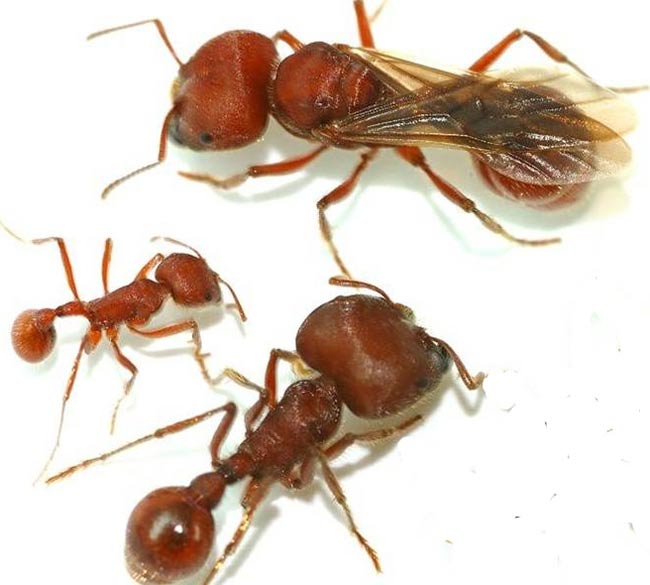How to Eat Ants Without Getting Bitten

Harvester ants are among the most aggressive and venomous stinging insects known. Although their stings, in quantity, can kill, the horned lizard captures harvesters by the dozen — in a typical lizardlike manner.
What comes next, however, doesn't conform to typical lizard table manners.
Most lizards bite and chew their prey before swallowing, but after nabbing one of the nasty ants with its long tongue, the horned lizard rolls its snack straight into its esophagus, merging intake, transport, and swallowing into a single thirty-millisecond move. Using high-speed videography, Wade C. Sherbrooke of the American Museum of Natural History's research station in Portal, Arizona, and Kurt Schwenk of the University of Connecticut in Storrs revealed that remarkable process.
But if horned lizards don't kill harvester ants with their teeth, how can they possibly avoid getting bitten and stung as their pugnacious meals go down the hatch?
The lizards' stomach contents provided the answer. Sherbrooke and Schwenk found the ants enveloped in mucus — their mandibles, limbs, and stingers completely immobilized. The goo, the scientists discovered, is produced in specialized cells distributed on the reptilian ant eater's tongue, larynx, trachea, and pharynx.
The horned lizard's feeding mechanism and anatomy are unique among lizards — as is its taste for harvester ants. You've got to get creative to deal with food that fights back.
The finding was detailed in the Journal of Experimental Zoology.
Get the world’s most fascinating discoveries delivered straight to your inbox.
- Gallery: Ants of the World
- Vicious Ants Made to Attack Their Own
- Why Ants Rule the World


